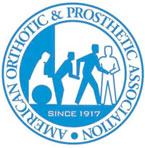Compression Stockings FAQs
Compression stockings come in different length types (bellow the knee, thigh and pantyhose), foot styles (closed or open toe) and compression range, which is measured in mmHg (millimetres of mercury). There are designated medical indications for each compression class:
Light compression -10-20mmHg- used for mild varicosity, often purchased over the counter.
Moderate compression – 20-30mmHg (CCL1) – used in relation to a conditions of the superficial veins. Post-surgical, minor varicosities, minor ankle, leg and foot swelling, heaviness and fatigue in legs, post sclerotherapy, initial varicosities or prophylactic treatment during pregnancy, superficial thrombophlebitis, hereditary disposition toward vein disease.
Strong compression – 30-40mmHg (CCL 2) – used for conditions within the superficial and deep systems. Moderate varicosities and edema, lymphatic edema, management and prevention of venous ulcers, orthostatic hypotension, post-surgical, post-sclerotherapy, effective scar formation after burns, pregnancy with previous phlebitis, stasis dermatitis due to CVI.
Very strong -40-50mmHg (CCL3) – used for advanced conditions and chronic venous insufficiency or venous ulceration. Severe varicosities, severe edema, lymphatic edema, management of venous ulcers, post- phlebitis syndrome, chronic venous insufficiency (CVI), reversible lymphedema, venous ulcers, post-surgery, orthostatic hypotension.
The compression garments help minimize and control swelling and pain, and are designed to treat a wide variety of vein disorders such as: lymphedema, edema, leg swelling, venous insufficiency, varicose veins, diabetes, Deep Vein Thrombosis (DVT), prevention of venous ulcers, etc.
Consult with your primary care provider, physician or vascular specialist – they can prescribe necessary compression garment for you. Compression garments are usually sold at medical supply stores, clinics and some pharmacies. It is highly recommended to see a Certified Compression Garments Fitter when buying your compression garment – they will properly measure you, determine the right size and suggest the choice of garments to best fit your lifestyle and preferences.
Compression garments provide external support to vein walls and work in conjunction with the calf muscle pump. They help minimize and control swelling and leg pain, increase blood flow velocity, counteract raised venous pressure, preventing edema and venous hypertension. If you stand for long hours every day, sit for extended hours, or face surgical-recovery period, compression stockings can alleviate pain and make your everyday life quite comfortable and relaxed. Unless otherwise instructed by a medical professional, stockings should be worn during the day, while you are active.
Compression stockings are a specialized hosiery designed to help prevent the occurrence of, and guard against further progression of, venous disorders such as edema, phlebitis and thrombosis. Compression stockings are elastic garments that apply pressure gradually –greatest at the ankle and decreases proportionately up the limb, worn around the leg, compressing the limb.
Compression stockings and socks nowadays are very fashionable and look just like regular hosiery and dress socks.
At Comfort Clinic, we carry compression stockings in wide range of styles, knits, textures and fashionable colors – for both women and men. Our certified compression garments fitters will recommend compression product to best suit your needs, select proper size and length to achieve the perfect anatomical fit.
Thrombo-Embolic Deterrent Hose (T.E.D) or anti-embolism stockings 10-20mmHg (ideally 18mmHg at the ankle, 14mmHg at the calf) – for use by the non-ambulatory (bed or wheelchair confined) user to prevent clotting and embolism (vein obstruction). Teds are of little therapeutic value to the ambulatory (active) user.
Simply put – yes. Even though compression stockings and socks look a lot like regular ones nowadays, they don’t fit the same way. The size of your ankles, calves, thighs, the length of your legs, as well as the compression strength must be used to determine the proper size of your compression garment. Poorly fitted compression stockings may be simply ineffective and, in some cases, even harmful. Compression Garments Fitters are trained specialists who have an extensive knowledge of compression therapy, fitting techniques and compression garments. They will measure you, select the right product and educate you on proper use, application and care.
People with certain leg problems or at risk for blood clots in the legs, known as deep vein thrombosis (DVT) must wear compression garments. These clots can also develop as a result of prolonged bed rest (such as after surgery), sitting for long periods (such as on a plane, at work, etc.), use of birth control pills or hormone replacement therapy, pregnancy, family history of DVT, inflammatory bowel disease, and certain genetic clotting disorders. Other groups that can benefit from wearing compression stockings include people with varicose veins, venous leg ulcers, or leg swelling (edema), as well as those with circulatory problems. People who spend a lot of time on their feet will find that the stockings improve comfort. They’re also popular among some athletes, such as runners and basketball players.
Anti-embolism stockings (TED) are designed specifically for non-mobile patients or those confined to a bed to prevent Deep Vein Thrombosis. Ted stockings are not gradient: the same compression throughout the length of the garment and offer minimal compression 8-18mmHg (millimeters of mercury). Graduated compression stockings are medically therapeutic and designed for people who are mobile. They offer graduated compression, starting at the ankle and decreasing proximally. Compression levels range up to 50+mmHg. Greater compression is often necessary due to the increased effects of gravity on the circulatory system in a mobile patient.
Graduated compression stockings and socks provide necessary external support to the vein walls and work in conjunction with calf muscle pump. Compression stockings provide circulation while helping to minimize and control leg and ankle swelling.
Orthotics FAQs
Wear shoes that fit well, have wider toe box, arch support and shock absorbing soles. Rest your feet as often as possible. If pain persists, ask your doctor about physical therapy and/or getting a custom made orthotics/inserts to be worn in the shoe.
The best shoe orthotics/ insoles are those that provide just the right amount of support, flexibility and stability. Cushioning and shock absorption is also essential. They have to provide comfort, enough arch support and biomechanical alignment.
Slim Dress Orthotics/ Insoles are custom made for non-removable liner shoes. Slim narrow grind shell, suede top with 1mm underlay.
There are custom made orthotics specifically designed for the skates. They enhance your performance by creating a comfortable environment for your feet and have all the supportive benefits of the custom orthotics to eliminate your foot issues.
If your orthotics were made for dress shoe, switching it to sport shoe may not be advisable. You can transfer from one dress shoe to another. It is better to have a specially designed custom-made orthotics for your soccer cleats, ski boot or athletic shoes.
Talk to your doctor to determine if orthotics will help you in your daily activities. Orthotics provide improved stability through balances force re-distribution and alignment of the foot, creating a stable foundation for the rest of your body. A custom made Foot Orthotic can reduce any extra stress or pain in feet, ankles, knees, hips and back. Wear your custom insoles as often as possible for maximum benefit!
Custom-made orthotics not only have preventative function – they can be used in treatment of certain conditions. Doctors prescribe orthotics to treat foot problems such as plantar fasciitis, bursitis, tendinitis, diabetic foot ulcers, and foot, ankle, and heel pain. Clinical research studies have shown that prescribed foot orthotics decrease foot pain and improve function.
According to studies, less than 10% of the world population would have what is called a normal or neutral foot, meaning a foot that does not require any special care or support to maintain its shape when loaded with the body weight. So unless you are the lucky one, and have perfect feet – you will benefit from using orthotics. Your feet are the base of support of your entire skeleton, so they may affect the entire body if they are tilted or not straight. The sooner you start wearing orthotics, the lesser are the chances of developing other health problems later on.
Orthotics help to control abnormal foot motion, especially excessive pronation and supination of the lower ankle or subtalar joint. They provide stability for the foot and correct injury-causing imbalances. Orthotics may prevent injury or deformity from occurring or halt the progression of existing problems and allow healing occur. They are also very useful in optimizing and enhancing comfort and protection.











